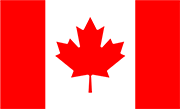Make sure you haven't got the discount earlier.
Appliance Parts
- Accessories
- Dishwasher
- Dryer
- Stove / Oven
- Microwave
- Refrigerator
- Washer
- See more... See less...
Lawn Equipment Parts
- Lawn Mower
- Chainsaw
- Blower
- Generator
- Air Compressor
- Lawn Tractor
- Pressure Washer
- See more... See less...
Major Foodborne Pathogens, Parasites, Microorganisms, Viruses and Natural Toxins that Cause Food Borne Illness
Many types of bacteria exist from beneficial kinds to harmful kinds. While the good bacteria assist in digestion and promotes sound health, the bad ones have the capacity to cause severe health concerns. Cleanliness is an essential part of preventing illnesses caused by harmful bacteria. Bad bacteria in the digestive system can lead to food poisoning and illness. Food borne diseases are caused by not just the bad bacteria but also by protozoa, viruses, toxins from natural sources, and several pathogenic agents.
Pathogenic bacteria are capable of harming the body by causing diseases. They usually harm the body under certain circumstances. When there are existing wounds or certain health concerns, pathogenic bacteria use this opportunity to replicate and spread. There are different kinds of pathogenic bacteria such as Salmonella spp., Clostridium botulinum, Listeria monocytogenes, Vibrio cholerae non-O1, Bacillus cereus, and Shigella spp. For instance, the Salmonella spp. is a bacterium that grows in the shape of a rod and reaches the human body through raw seafood, water, insects, swine, cocoa, cream toppings, desserts, and poultry.
The Enterovirulent Escherichia coli Group are micro organisms responsible for several food borne diseases. The group consists of four different types of micro-organisms, which are namely Escherichia coli O157:H7 enterohemorrhagic (EHEC), Escherichia coli - enteropathogenic (EPEC), Escherichia coli - enteroinvasive (EIEC), and Escherichia coli - enterotoxigenic (ETEC). Gastroenteritis is the most common digestive disorder caused by this group.
Parasitic protozoa include micro organisms such as Cyclospora cayetanensis and Entamoeba histolytica. Amoebiasis is a common disease caused by the protozoa Entamoeba histolytica.
Viruses also cause food borne diseases. Norwalk virus group, Hepatitis A virus, Rotavirus, Hepatitis E virus, and a few gastroenteritis viruses completely disrupt the digestive system. In some cases, the person preparing the food ends up allowing his or her own fecal matter into the food especially if the person has not washed his or her hands thoroughly. Rotavirus and Hepatitis A virus usually enter the body through food.
There are different forms of natural toxins that enter the body. The Tetrodotoxin enters the body if puffer fish is eaten without cleaning it properly. It can cause violent and sudden death. There are other toxins such as Grayanotoxin and Gempylotoxin caused by bad or old honey and Escolar respectively.
One of the most prevalent pathogenic agents is the Prion. They are not organisms but tissues of animals that have either not grown properly or have gotten infectious due to an external agent. A disease called the Mad Cow Disease is caused by prions.
Food borne disease can be prevented if cleanliness is maintained at all times, not just by washing hands before eating, but also by ensuring cleanliness everywhere and in everything. It’s also important to buy raw foods such as fish and meat from FDA approved sources only. Look to the following resources for more information on the pathogenic bacteria, parasites, micro-organisms, viruses and natural toxins that are known to cause food borne illness.
PATHOGENIC BACTERIA
- Aeromonas hydrophila and other spp.
- Bacillus cereus
- Campylobacter jejuni
- Clostridium botulinum
- Clostridium perfringens
- Listeria monocytogenes
- Plesiomonas shigelloides
- Salmonella spp.
- Shigella spp.
- Staphylococcus aureus
- Streptococcus
- Vibrio cholerae O1
- Vibrio cholerae non-O1
- Vibrio parahaemolyticus and other vibrios
- Vibrio vulnificus
- Yersinia enterocolitica and Yersinia pseudotuberculosis
ENTEROVIRULENT ESCHERICHIA COLI GROUP (EEC Group)
- Escherichia coli O157:H7 enterohemorrhagic (EHEC)
- Escherichia coli - enteroinvasive (EIEC)
- Escherichia coli - enteropathogenic (EPEC)
- Escherichia coli - enterotoxigenic (ETEC)
PARASITIC PROTOZOA and WORMS
- Acanthamoeba and other free-living amoebae
- Anisakis sp. and related worms
- Ascaris lumbricoides and Trichuris trichiura
- Cryptosporidium parvum
- Cyclospora cayetanensis
- Diphyllobothrium spp.
- Entamoeba histolytica
- Giardia lamblia
- Eustrongylides sp.
- Nanophyetus spp.
VIRUSES
NATURAL TOXINS
- Aflatoxins
- Ciguatera poisoning
- Grayanotoxin (Honey intoxication)
- Mushroom toxins
- Phytohaemagglutinin (Red kidney bean poisoning)
- Pyrrolizidine alkaloids
- Scombroid poisoning
- Shellfish toxins (PSP, DSP, NSP, ASP)
- Tetrodotoxin (Pufferfish)
OTHER PATHOGENIC AGENTS
- Search your model number to find:
- Genuine OEM parts guaranteed to fit
- Free manuals and guides
- Repair instructions and videos


































